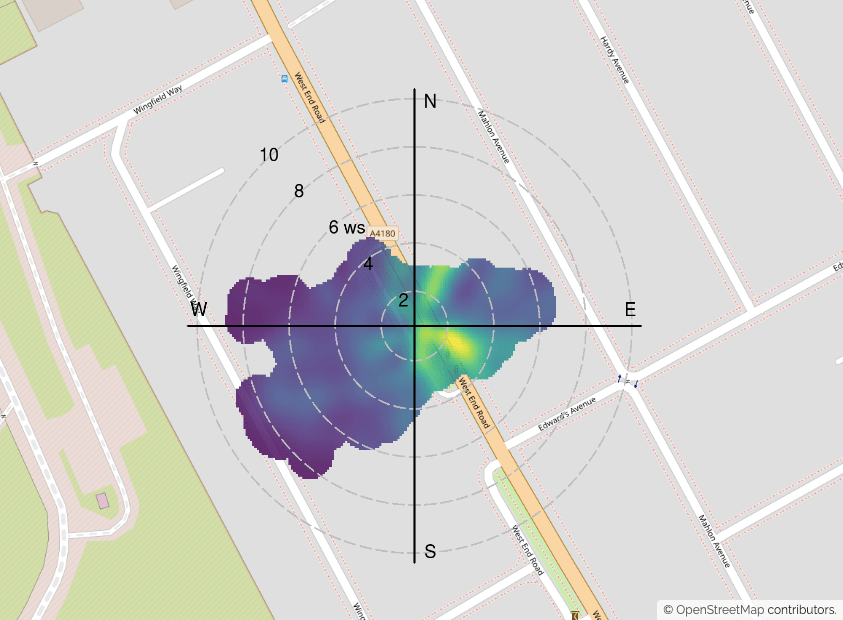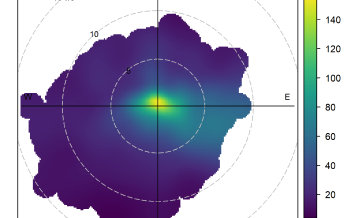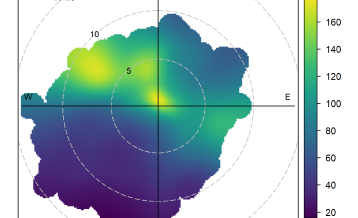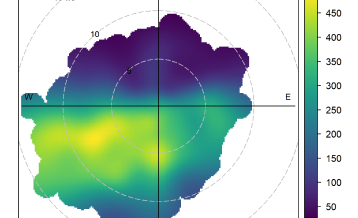Polar Plots
Pollutant source identification, depending upon the wind speed and wind direction.

What is a bivariate polar plot?
Bivariate polar plots help us to understand the origin of air pollution sources in the areas where air quality is being monitored in continuous, normally by making use of automatic monitoring techniques.
This is made by integrating the air quality readings that are being measured, with measurements of wind speed and wind direction taken at the monitoring site, during the same time period.
What is the map telling you?
The bivariate polar plots on the map above use the last fortnight of data from 22 automatic air quality monitoring stations around Heathrow. The colours on the markers therefore represent the average pollutant concentrations at different wind conditions over the last 14 days.
Vertical and horizontal axes
Indication of the wind direction, in a similar way as a wind rose or a compass would, with the cardinal points N (North), S (South), W (West) and E (East) being displayed.
Circular dashed rings
An indication of the wind speed. This starts at zero (0 m/s) at the “bullseye” central point, and slowly increases outwards in all directions.
Wind direction
Direction where the potential air pollution source is coming from.
Wind speed
where this air pollution source is located: if very close to your monitoring location or if it comes from further way.
Polar plots also display different colours. The darker colour of the surface corresponds to low pollutant concentrations, and the lighter colours to much higher concentrations.
Examples
Site A

A high concentration pattern centred on the "bullseye" of the plot, with wind speeds close to zero in all directions, indicates a very local air pollution source.
Site B

Elevated concentrations at higher wind speeds (5-10 m/s) from the North-West indicate a dominant pollution source in that direction.
Site C

A typical roadside site shows clear offset and dispersion of pollution levels across various wind speeds and directions (South to West).
Top tip: When using the polar plot map, please note that the region covered by the individual polar markers is not significant – the radial axes represent wind speed, not distance from the measurement site. Instead, focus on the directions from which the air associated with the highest concentrations appear to be arriving.
By default, only NO2 is displayed on polar plots, but ozone and particulate matter (all illustrated using different colour scales) can be displayed by selecting the pollutant.
This page was created by the openair and openairmaps R packages. Directions on the use of these packages, as well as a more thorough technical description of polar plots, can be found in Chapter 8 of the openair book.